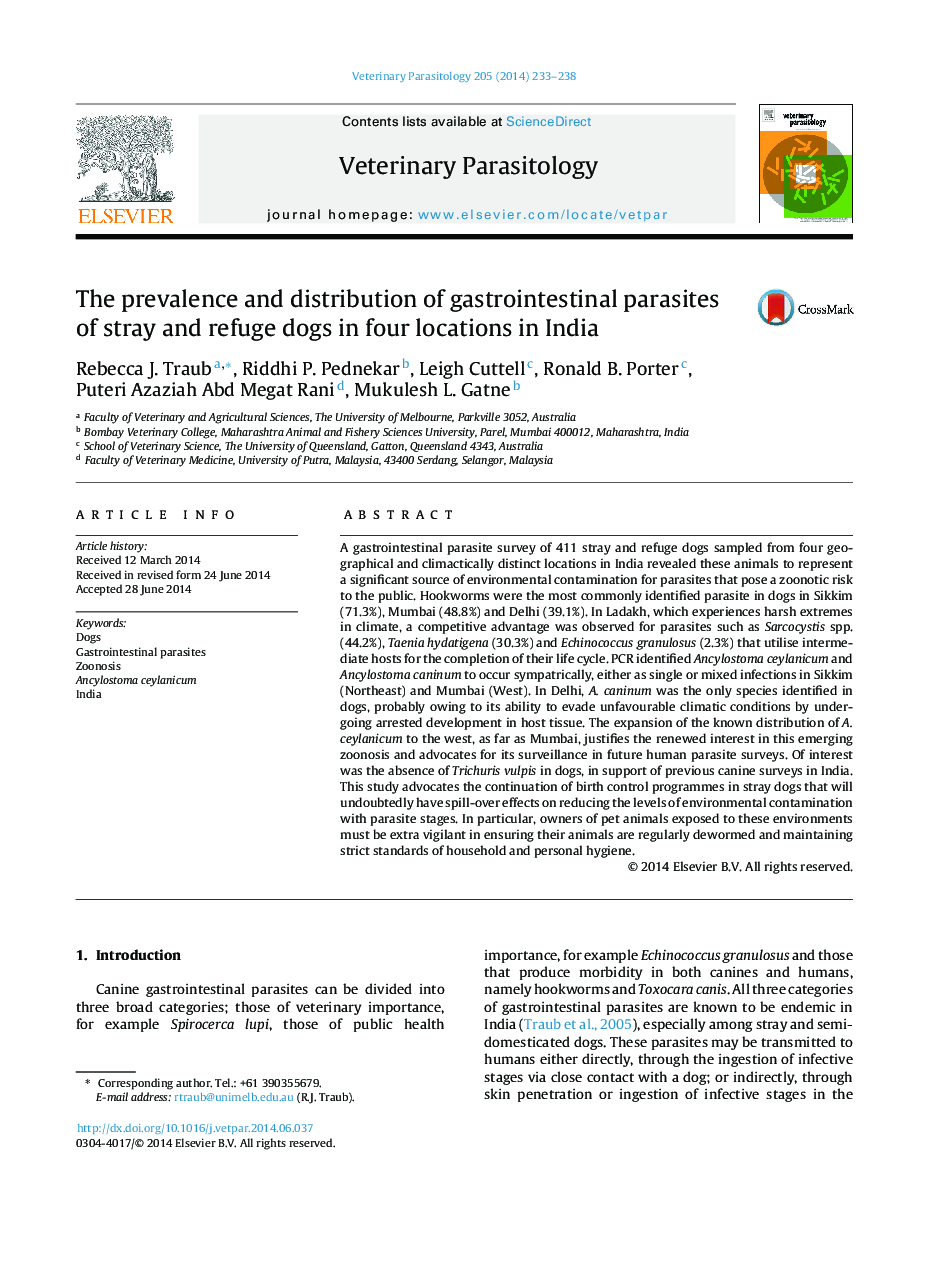| کد مقاله | کد نشریه | سال انتشار | مقاله انگلیسی | نسخه تمام متن |
|---|---|---|---|---|
| 5803217 | 1555681 | 2014 | 6 صفحه PDF | دانلود رایگان |
- A survey of enteric parasites of stray and refuge dogs was conducted in India.
- Canine parasites of veterinary, public health and economic importance were endemic.
- Hookworms were the most common parasite of dogs in Delhi, Mumbai and Sikkim.
- In Ladakh, dogs were commonly infected with meat-borne parasites.
- Canine neutering programmes will reduce risks of parasitic zoonoses.
A gastrointestinal parasite survey of 411 stray and refuge dogs sampled from four geographical and climactically distinct locations in India revealed these animals to represent a significant source of environmental contamination for parasites that pose a zoonotic risk to the public. Hookworms were the most commonly identified parasite in dogs in Sikkim (71.3%), Mumbai (48.8%) and Delhi (39.1%). In Ladakh, which experiences harsh extremes in climate, a competitive advantage was observed for parasites such as Sarcocystis spp. (44.2%), Taenia hydatigena (30.3%) and Echinococcus granulosus (2.3%) that utilise intermediate hosts for the completion of their life cycle. PCR identified Ancylostoma ceylanicum and Ancylostoma caninum to occur sympatrically, either as single or mixed infections in Sikkim (Northeast) and Mumbai (West). In Delhi, A. caninum was the only species identified in dogs, probably owing to its ability to evade unfavourable climatic conditions by undergoing arrested development in host tissue. The expansion of the known distribution of A. ceylanicum to the west, as far as Mumbai, justifies the renewed interest in this emerging zoonosis and advocates for its surveillance in future human parasite surveys. Of interest was the absence of Trichuris vulpis in dogs, in support of previous canine surveys in India. This study advocates the continuation of birth control programmes in stray dogs that will undoubtedly have spill-over effects on reducing the levels of environmental contamination with parasite stages. In particular, owners of pet animals exposed to these environments must be extra vigilant in ensuring their animals are regularly dewormed and maintaining strict standards of household and personal hygiene.
Journal: Veterinary Parasitology - Volume 205, Issues 1â2, 15 September 2014, Pages 233-238
